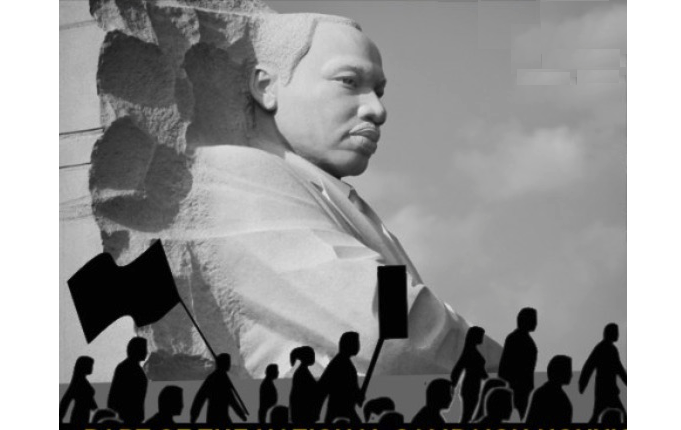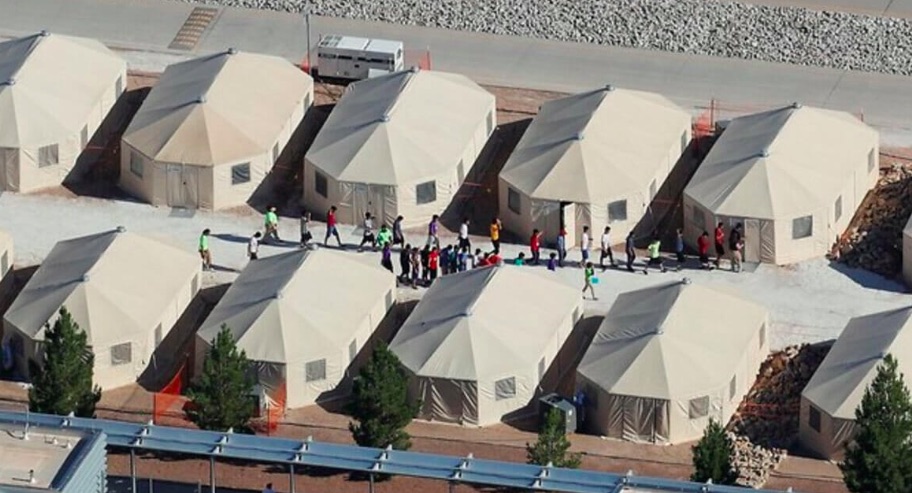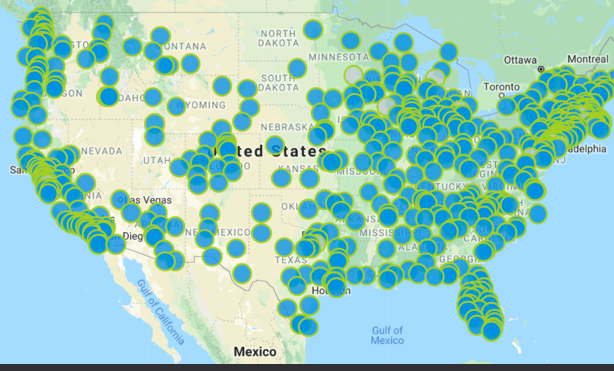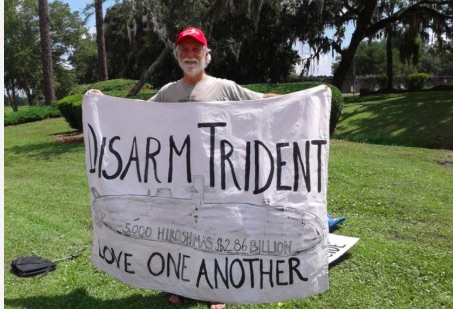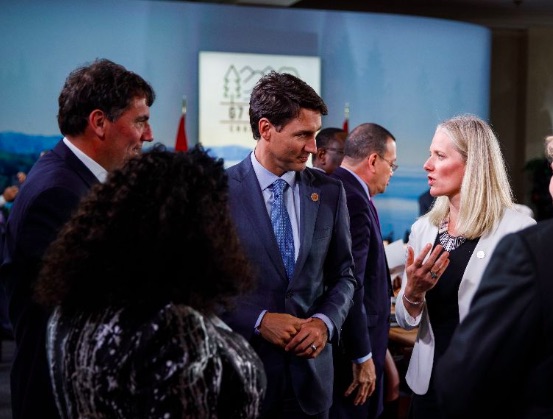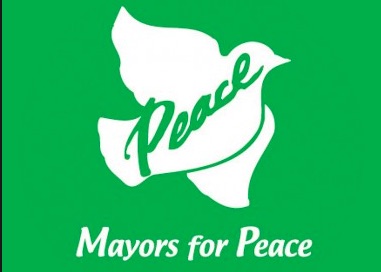DISARMAMENT & SECURITY .
An article from Ploughshares
On May 1st, 1952, two thousand Marines waited in the Nevada desert for the detonation of an atomic bomb. Crouched in foxholes just two miles from ground zero without protective equipment, they were instructed to keep their heads down. “The bottom of my foxhole turned a brilliant, bright white I’ve never seen except in chemistry classes,” Bud Johns remembers, adding, “We were told to stay down until that light changed, and then immediately leave the foxholes and double time with full packs and rifles toward ground zero.” The explosion to which these Marines were exposed was the 19 kiloton Shot DOG, the fourth of a series of eight atmospheric tests of nuclear weapons conducted by the Atomic Energy Commission as part of Operation TUMBLER-SNAPPER. According to a government fact sheet, “Tactical maneuvers were designed both to train troops and to test military tactics.”

Photo: Bud and Fran Johns
“When we got to ground zero,” Bud said. “where they had built a mock village with houses, sheep and goats, there was nothing but ashes. That made me a pacifist.”
Asked about his exposure to radiation, Bud shared, “We were guinea pigs. We wore badges to record how radioactive we were. We were lucky in our test because the wind disbursed the mushroom cloud and its radioactivity. The next test dropped a radioactive hotspot near St. George, Utah, where it killed farm animals. The hotspot remained, and years later when they were filming The Conqueror many of the cast and crew ended up dying of an identical cancer. Nobody paid much attention until John Wayne died.”
“The tests were widely publicized, so we weren’t sworn to secrecy afterwards,” Bud explained, “but we never talked about it.” Looking at a photo of Shot DOG that appeared in newspapers at the time, Bud noted he might be among the Marines pictured in front of a giant mushroom cloud. When results of US nuclear tests were declassified, Bud learned that his radiation exposure fell within acceptable AEC standards.
(Continued in right column)
Can we abolish all nuclear weapons?
(Continued from left column)
Completing his Marine service in 1953, Bud returned to his home state of Michigan where he renewed a career in journalism as a political reporter for the Flint Journal. Having worked his way through Albion College, Bud came to San Francisco in 1956 as a newspaper bureau chief.
Not long after arriving in San Francisco, Bud met Sally Lilienthal. Sally was horrified to learn of Bud’s experience. “I’ve never shared my story publicly, only individually, and I told Sallie I wanted no part of anything like that ever again. I became involved with Ploughshares Fund as soon as Sally started it,” Bud said. Bud and Fran Johns were married in 1992. Having dated while Fran attended Randolph-Macon Woman’s College and Bud was in the Marines, they were reintroduced after 40 years by family. According to Bud, “When Fran first came to San Francisco, I brought her to a party and introduced her to Sally with, ‘I want you to meet a great lady.'” Fran, a life-long writer who has written extensively in the fields of death and dying and reproductive justice, added, “So, I married into Ploughshares.”
Reflecting on Bud’s experience, Fran said, “Every time I hear about a test, I have to wonder what human participation they had that we’ll never hear about. When you look at the fallout on the soldiers and the film crew, you get an idea of how related we all are. We can’t just think that if North Korea drops a bomb somewhere the effects will only impact that place.”
“And the bombs are so much more powerful now than the bomb I saw,” Bud added. “It’s like comparing the M1 rifle I carried to an AR15.”
Commenting on his decades-long annual support of Ploughshares Fund, and his decision to include Ploughshares Fund in his will, Bud said, “The work it does is important, and it’s a battle that doesn’t have the support it should. You have to chip away at it, and that’s what Ploughshares Fund does. I’m probably the only member of Ploughshares who has seen an A-bomb blast. Politicians often think in terms of a war machine. A lot more of them would be pacifists if they had experienced the foxhole and seen the results at ground zero.”
Fran expressed her hope that people will see how Ploughshares Fund works to, “stop us from going down this horrendous path we’re on.” She said, “Other than voting, the individual doesn’t have the power to stop this, so supporting Ploughshares Fund is one little way for people to help stop the planet from self-destructing,” Ploughshares Fund is honored to list Bud and Fran Johns as members of the Nuclear-Free Legacy Society. For more information about the Nuclear-Free Legacy Society, or about ways to support Ploughshares Fund through your will or trust, contact Elizabeth Warner at 415-668-2244 or ewarner@ploughshares.org.
(Thank you to Janet Hudgins, the CPNN reporter for this article.)


